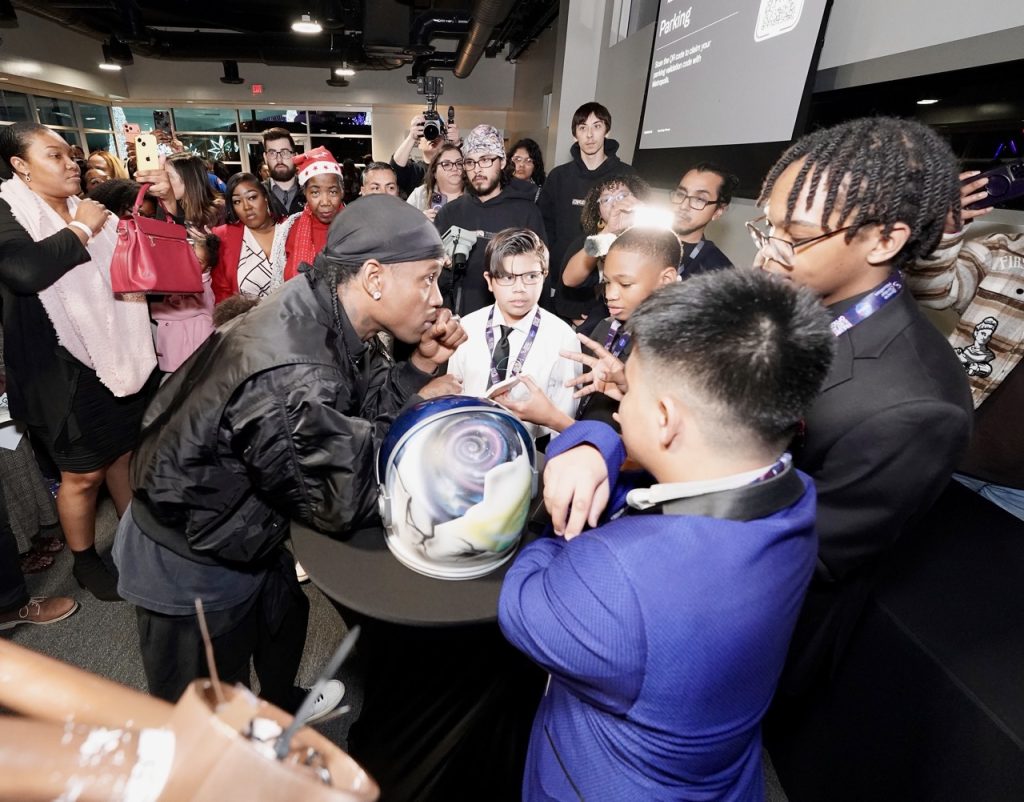This year marks the 50th anniversary of the first and second lunar landing. In honor of this historic accomplishment, we are highlighting Apollo astronauts, like the fourth person to step foot on the Moon, Alan Bean.

Bean’s first trip into space was aboard Apollo 12, where he served as the lunar module pilot. He flew into space one other time as a part of the Skylab II mission, and has logged a total of 69 days, 15 hours and 45 minutes in space, which includes a little over 31.5 hours spent on the Moon.
One of Bean’s colleagues, Apollo 17 astronaut Harrison Schmitt, recalled Bean as being, “one of the great renaissance men of his generation – engineer, fighter pilot, astronaut and artist.”
Today, we celebrate Bean’s contributions and achievements by sharing three fun facts about the Apollo astronaut you might have missed!
1. He thought the Moon would one day be a “great place for vacation”.
Could you imagine spending part of your summer on the Moon?
In a 2008 interview with NASA, Bean described details of his Apollo 12 flight, and what it felt like to be on the lunar surface. Bean shared how much fun he had walking on the surface of the Moon, adding that it might one day make a good spot to go on holiday.
“On Earth, I weighed 150 pounds; my suit and backpack weighed another 150. 300 pounds,” Bean said. “Up there, I weighed only 50. So I could prance around on my toes. It was quite easy to do. And if you remember back to some of the television we saw, Buzz and Neil on the Moon with Apollo 11.
“Black and white. They were bouncing around a lot. They were really bouncing on their tip toes. Quite fun to do. Someday maybe be a great place for a vacation. We’re all born about three or four or five hundred years too soon.”
2. He liked to think of himself as “an artist who was once an astronaut”.
In 1981, Bean departed from NASA to pursue his greatest passion: art.

Bean drew on his experiences as an astronaut, as well as his colleague’s experiences in space, to recreate and reimagine countless cosmic masterpieces. His paintings have captured the Moon with an accuracy unlike ever before.
Bean even used a hammer he took to the Moon to pound on the paintings, creating rugged features that mimic the Moon’s rocky terrain. He used his Moon boots to make the imprints on the canvas, and he would often leave lunar regolith, or Moon dust, on the painting to bring the scene to life.
At Space Center Houston, you might have noticed the large mural of an Apollo astronaut in front of the American flag close to the NASA Tram Tour. Bean created this hand-painted, 39 ft. by 17 ft. mural in 1992.
The mural, which continues to captivate visitors from around the world, was slightly modified from his original painting titled “America’s Team…We’re Number 1”, to fit the proportions of the wall space. The new painting was aptly given the title, “America’s Team…Just the Beginning.”
When describing the moment that inspired the scene, Bean said “Neil’s first step was a wonderful moment in history, an impossible dream that Americans made into reality, but it was just the beginning of human movement off this planet and into the infinite ocean of space.”
Bean’s incredible work also illustrates the connection between science and the arts, and how with his stellar paintings, this artist astronaut was able to bring the wonder of space to people on Earth.

3. As commander of the Skylab II mission, Bean and his crewmates flew nearly 24.4 million miles, a record at the time.
On July 28, 1973, Bean launched into space as mission commander for Skylab II. Much like the International Space Station today, astronauts aboard Skylab performed scientific and medical experiments.
The crew orbited the Earth a total of 858 times, spent 1,081 hours conducting Earth and solar experiments, and performed 3 Extravehicular Activities (EVAs), which totaled 13 hours and 43 minutes.
During this mission, the crew set a world record by spending a total of 59 days in space and traveling 24.4 million miles. Although that record has now been surpassed, it roughly doubled the previous mission’s duration and distance traveled in space.
As if those numbers aren’t impressive enough, the Skylab II crew generated 18 miles of computer tape during surveys of Earth’s resources and 76,000 photographs of the Sun to help scientists better understand its effects on the solar system.
Check out Bean doing gymnastics aboard Skylab in the clip below.








